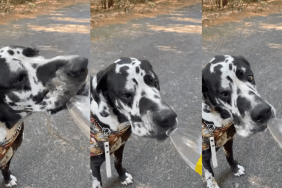Narcolepsy in dogs happens when a dog suddenly collapses and stops moving. The condition is caused by nervous system problems.
Thankfully, the condition is not usually life-threatening. Although, unfortunately, there is no current cure for the condition.
Additionally, some breeds seem to suffer from the condition more than others, including Labrador Retrievers, Doberman Pinschers, and Dachshunds.
If you see the signs of the condition in your dog, then get to a veterinarian for a proper diagnosis and treatment.
Here’s what you should know about the symptoms, causes, and treatments for the condition.
Symptoms of Narcolepsy in Dogs
The condition produces a small range of symptoms. For example, some of the most common symptoms include:
- Fainting
- Collapsing
- Legs buckling
- Twitching
- Loss of reflexes
- Rapid eye movements
- Sleeping more during the day
Generally, episodes of the condition last a few seconds. Although some dogs can take a few minutes to fully recover from an episode.
Causes of Narcolepsy in Dogs

The cause of the condition can often be inherited. For example, the following breeds seem to be born with the condition more than other breeds:
- Labrador Retrievers
- Dachshunds
- Doberman Pinschers
Additionally, certain medical conditions that involve inflammation can sometimes cause the condition. For instance, pneumonia and meningitis are examples of this.
Also, Labrador Retrievers can suffer from a similar condition called exercise induced collapse. You can read more about that specific condition here.
Treatments for Narcolepsy in Dogs
Firstly, your vet will ask about your dog’s symptoms. Secondly, your vet will ask about your dog’s full medical history. This will include breed-specific problems.
Thirdly, your vet will carry out a full physical examination. Blood and urine tests will be taken. The subsequent results of the tests can help to rule out other conditions.
Additionally, in some cases your vet will use an MRI or will take a sample of your dog’s cerebrospinal fluid to try and confirm the condition.
Unfortunately, there is no cure for the condition. However, managing your dog’s lifestyle can help to decrease symptoms.
For example, learning about your dog’s triggers can help. For instance, many dogs suffer episodes of the condition during high intensity exercise sessions.
Additionally, in some cases steroids and other immune system medications can help. As always, if your vet prescribes your dog any medicine, make sure to stick to the correct dose and frequency instructions. Also, complete the full course of medicine.
Have you ever cared for a dog who suffered from this condition? How did your vet help your dog recover? Let us know in the comments section below.









